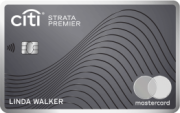The content is accurate at the time of publication and is subject to change.
When travelling outside of the country one of the biggest concerns is how to pay for things. While it is a good idea to have a little cash on you, many travelers opt to put whatever expenses they can onto a credit or debit card. This is because there can be hefty fees applied when converting one type of currency into another, and also to mitigate the damage suffered in the event of loss or theft of a wallet or purse while overseas.
Using a debit card on vacation is just as convenient as using one at home – it provides you access to quick cash at ATM’s and can be used to charge goods and services. But at what cost? There are fees to keep in mind when making your vacation budget - such as international ATM surcharge fees and foreign transaction fees – which can add tremendously to the overall cost of your vacation.
Foreign transaction fees levied to accounts where debit cards have been used overseas are nothing new. In fact, banks have been issuing them to accountholders for more than a decade. The fees vary from bank to bank, and they also vary depending on how you utilize your debit card while away. For example, if you use your debit card to withdraw the local currency from an ATM while you are abroad you run the potential for incurring several different fees, such as:
1) A flat-rate international ATM surcharge issued by your bank.
2) An additional bank charge in the form of a foreign transaction fee anywhere between 1-3% of the amount withdrawn.
3) A fee issued by the foreign bank for using their ATM, called an ATM access fee.
Using your debit card to pay for merchandise or meals can likewise incur fees, such as a foreign transaction fee that can range between 1 and 3% of the total purchase price.
In order to eliminate the unpleasant surprise of returning home to find that your bank has deducted more from your account than you anticipated to cover such fees, the best thing to do is contact your financial institution before your departure date to find out what to expect.
Some things you can do to minimize the fees you will have to pay to your bank when spending money while travelling are:
Plan your ATM withdrawals according to your bank’s fee structure.
If your bank charges you a flat fee per withdrawal at an out-of-country ATM regardless of the amount of money being withdrawn, then it makes the most sense to pull out larger amounts of money at a time and cut down on the overall amount of withdrawals.
Say no to merchants that offer the service of currency conversion.
This is a trick merchants use to earn money per transaction. A dynamic currency conversion will cost you more money, so just politely decline the offer and only sign off on bills that have been processed in the local currency.
Acquire a debit card that does not have foreign transaction fees.
Some banks or credit unions offer debit cards that are not susceptible to any foreign transaction or international ATM withdrawal fees. It may even be available at your current bank if you upgrade your account. If you have enough time before you leave, you can shop around at different lending institutions to find one with the best debit card option.
Use a credit card for purchases.
Many credit cards these days have no foreign transaction fees attached to them, making them a better choice to use for purchases abroad than a debit card that does have such fees. Consider using your debit card only at ATM’s when you need to withdraw cash in the local currency and use your credit cards for everything else.






